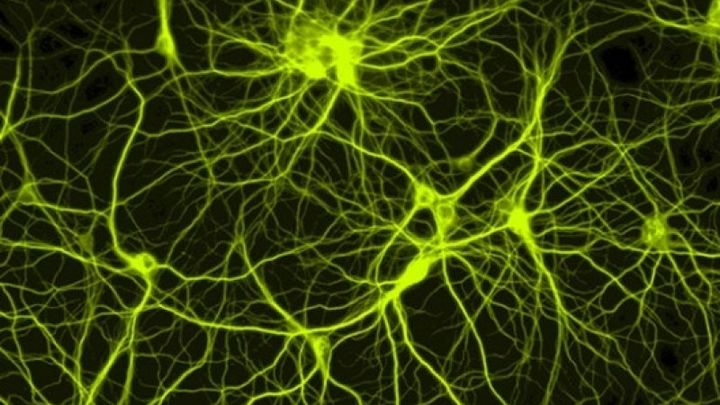
Neurostructural Research Labs
Donation protected
My name is Ronald Mervis, MS, PhD. I am a neuroscientist and a retired professor from the University of South Florida College of Medicine in Tampa. For 16 years I have also served as President and Chief Scientific Officer of Neurostructural Research Labs in Tampa, Florida.
Neurostructural Research Labs is a non-profit 501(c)(3) organization which conducts contract neuroscience research with scientists from all over the world involving diseases (such as Alzheimer's) and other factors (such as traumatic brain injury) that can cause brain damage and may affect learning and memory.
I am seeking to raise $32,000 to help support several new and exciting research projects on Alzheimer's disease and brain injury being carried out in my lab. In addition, some of the funds will also be used to help allow my students to attend scientific conferences where they can present the new data that they have generated. (Please scroll down for more detailed information.)
Below is a photo of me and one of my students.

Our research topics have included:
~~ Alzheimer's Disease and Brain Aging
~~ Traumatic brain injury (including the effects of multiple concussions),
~~ Developmental disorders (such as autism and schizophrenia)
~~ Effects of environmental neurotoxins on brain development and maturation
~~ Effects of viruses on brain development
~~ The effect of neuroinflammation on the brain
~~ Dietary influences on brain development and brain aging.
Our research methodology focuses on using a unique staining method, the Golgi stain, to visualize individual neurons. In particular this stain allows us to see the branches of the dendrites on the neurons and the synapses on those branches (the so-called dendritic spines). These dendritic structures are the neuroanatomical basis of complex brain circuitry and the underlying basis of higher cognitive functioning such as learning and memory.
The photomicrograph below is a Golgi-stained cortical neuron from a rat brain. The branches on the neuron are dendrites. Dendrites receive information from other neurons through synapses on their branches.

The photomicrograph below shows the appearance of dendritic spines from our Golgi stained neurons. Each dendritic spine represents a synapse for communication with other neurons.
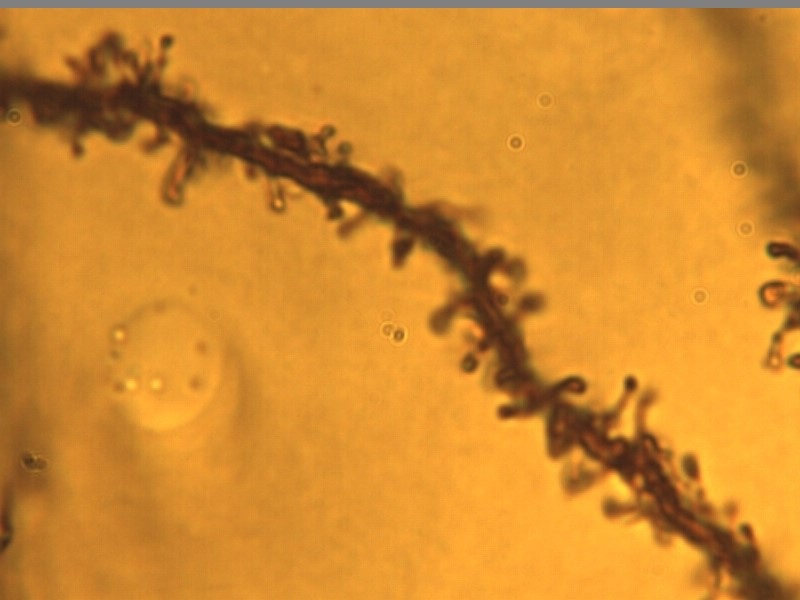
Loss of dendritic branching and the spines on those branches due to brain damage or neurological disease disrupts normal communication between neurons -- leading to memory and learning disorders.
The photomicrograph below shows the loss of dendritic spines on a neuron in an Alzheimer brain.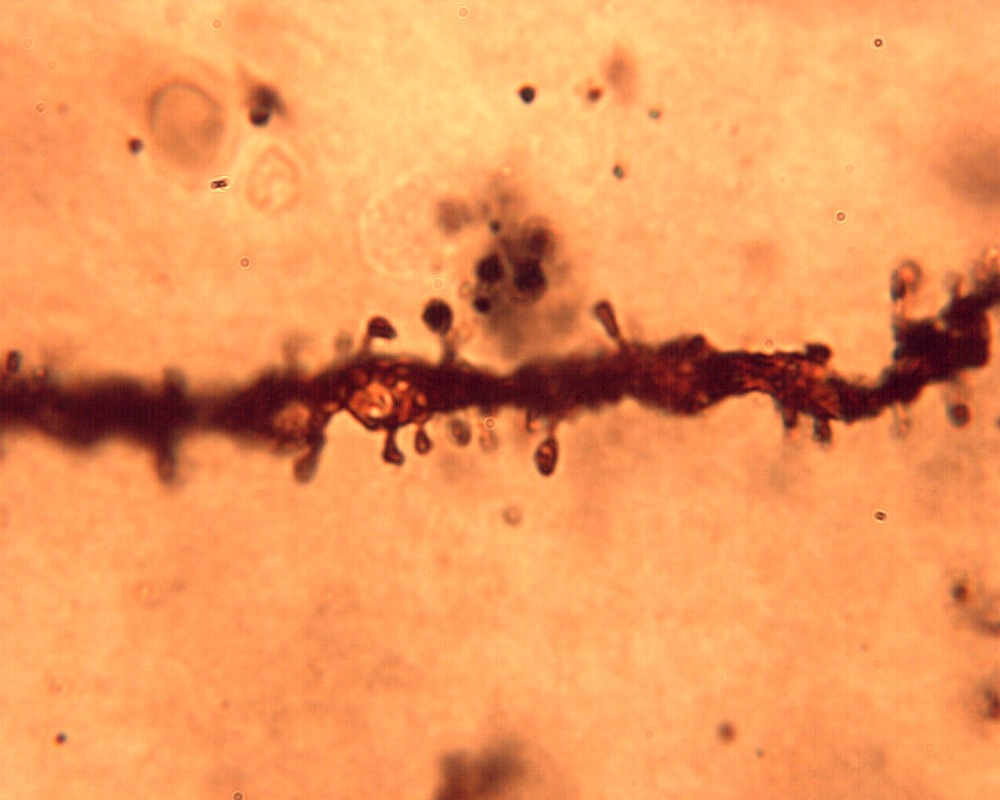
Here's another example: the photomicrograph below shows the normal appearance of dendritic spines on a dendritic segment from a neuron in the mouse cortex
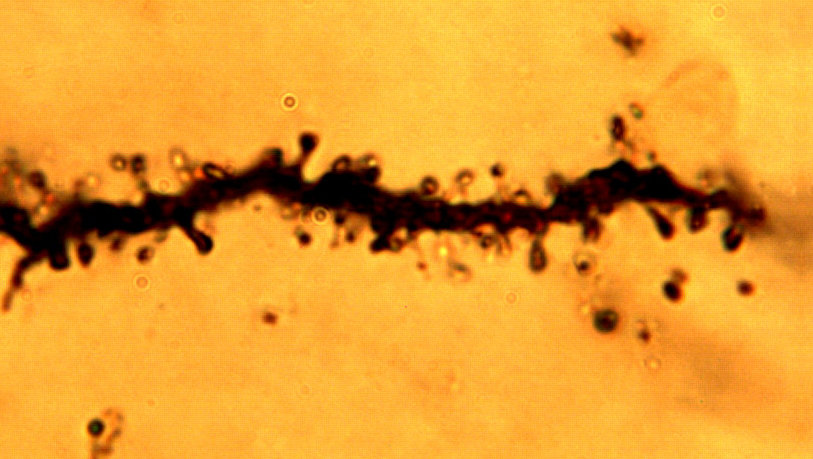
The photomicrograph below shows a dendrite from a mouse brain which received two concussions. Notice the dramatic loss of dendritic spines.
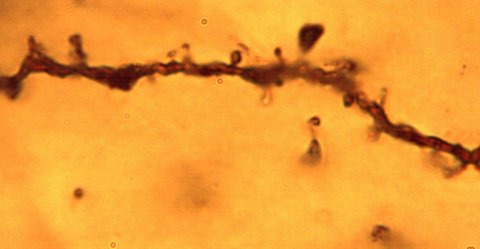 This demonstrates that this type of traumatic brain injury can lead to loss of connections between neurons (synapses) and this loss may be reflected by changes in learning and memory.
This demonstrates that this type of traumatic brain injury can lead to loss of connections between neurons (synapses) and this loss may be reflected by changes in learning and memory.
Another example (below) shows the effect of neurotoxins in the environment on brain development and the normal maturation of neurons. In this example, in the photomicrograph below, we show the normal appearance of a neuron in the cerebellum of the rat; this is a Purkinje cell.
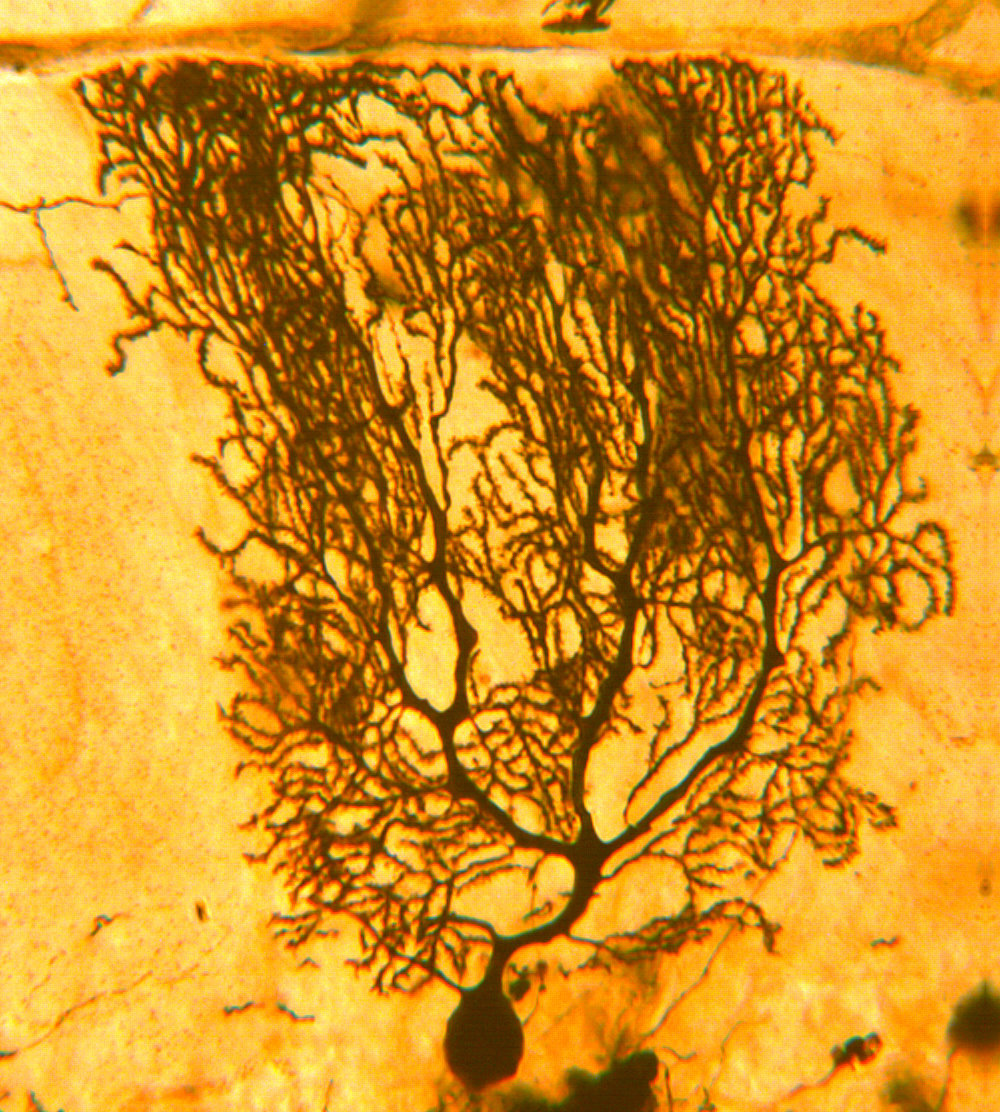
In the photomicrograph below we show a Purkinje cell from a rat which had been exposed to an environmental neurotoxin which is a by-product of herbicide production. Notice the abnormal appearance of the Purkinje cell in both shape and size.

The above images are just a very small sampling of the types of research that have we carried out. Our highly quantitative studies of the dendritic branching and spines are an effective means of assessing the health of the neurons and evaluating neural circuitry.
Why I Need Your Help.....
Our scientific expertise in Golgi staining and dendritic branching and spine analysis is unique, As a result, scientists from all over the world contact us with interesting and exciting ideas related to their research and ask us to find structural changes in neurons and brain circuitry that would compliment their results. This involves sending fixed brain tissues to our lab for the staining and subsequent neuronal analyses.
Much of our research is supported by our academic and government contracts, However, on occasion, we become involved in a exciting study of scientific significance where funds are not yet available to cover the cost of the project. In general, these projects would show great potential for gaining unique understanding of the disease and/or treating the disease... as for example, in a new approach for the treatment of Alzheimer's disease. Under these circumstances, we would want to know if the treatment would result in the enhanced brain circuitry (e.g., the formation of additional dendritic branching and/or dendritic spines). However, at the present time, there no research funds available to cover the cost of the study...and it may be many months before any money would become available. Indeed, we are currently involved in several such exciting projects that hold great promise.
The following are examples of collaborative studies that we are currently conducting without outside support:
(1) ~ Using an animal model of Alzheimer's diease, we are working with a group from a German University on a new treatment strategy to treat Alzheimer's disease.
(2) ~ In collaboration with a researcher from a major California medical school we are helping to evaluate a new rat model of Alzheimer's disease.
(3) ~ In collaboration with a team from Tel Aviv University in Israel we are evaluating the effects of blast-related traumatic brain injury on neuronal morphology in a mouse model.
(4) ~ We are working with a group of researchers from Hebrew University, Jerusalem, to evaluate the neuroprotective effect of certain components found in umbilical cord blood on treating traumatic brain injuries.
In addition to using the donations for the research projects , I also have a second major goal: to help my students.
Assisting My Students....
A second major goal of the lab is instilling the love and intellectual challenge associated with neuroscience research in the students. These students are the lifeblood of the lab. I am both fortunate and blessed to have really smart and hardworking undergraduate student interns from the University of South Florida (USF) . These students -- from the USF Honors College -- almost all are in pre-med or other pre-professional programs (PhD, dental, pharmacy).
The opportunity to do neuroscience research is an opportunity for them to learn more about the brain and neurological diseases. It provides an appreciation of the challenges associated with neuroscience research... both the excitement associated with obtaining an important new finding and, occasionally, the disappointment of generating results that were not statistically significant.
In addition, their research in my lab provides a pathway for them to attend scientific conferences and to give presentations at local, national, or international neuroscience meetings. This is an important component -- not only for the scientific recognition that they gain -- but that they can add to their resumes and which will make them more competitive when they apply for admission to their respective medical (or other postgraduate) programs.
The photo below shows the students in my lab from this year.
 One of the most positive aspects of working with my USF students is an appreciation of their diverse ethnic backgrounds . This year, my students come from families whose parents are immigrants from Vietnam, Mexico, India, Pakistan, Cuba, Colombia, Bangladesh, El Salvador, Senegal, Lebanon, Egypt, and Argentina. (We even have a native Floridian, as well as students from upstate New York and Delaware).
One of the most positive aspects of working with my USF students is an appreciation of their diverse ethnic backgrounds . This year, my students come from families whose parents are immigrants from Vietnam, Mexico, India, Pakistan, Cuba, Colombia, Bangladesh, El Salvador, Senegal, Lebanon, Egypt, and Argentina. (We even have a native Floridian, as well as students from upstate New York and Delaware).
Below are photos of some of my students involved in their research projects:
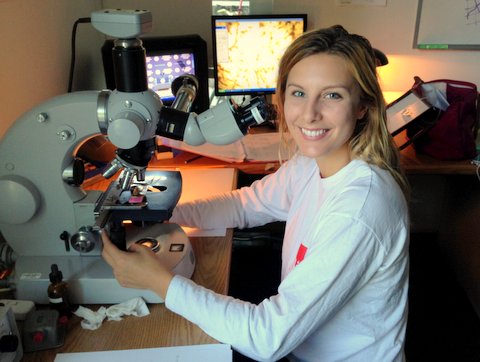
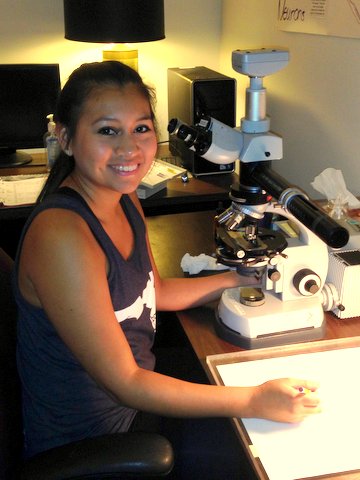
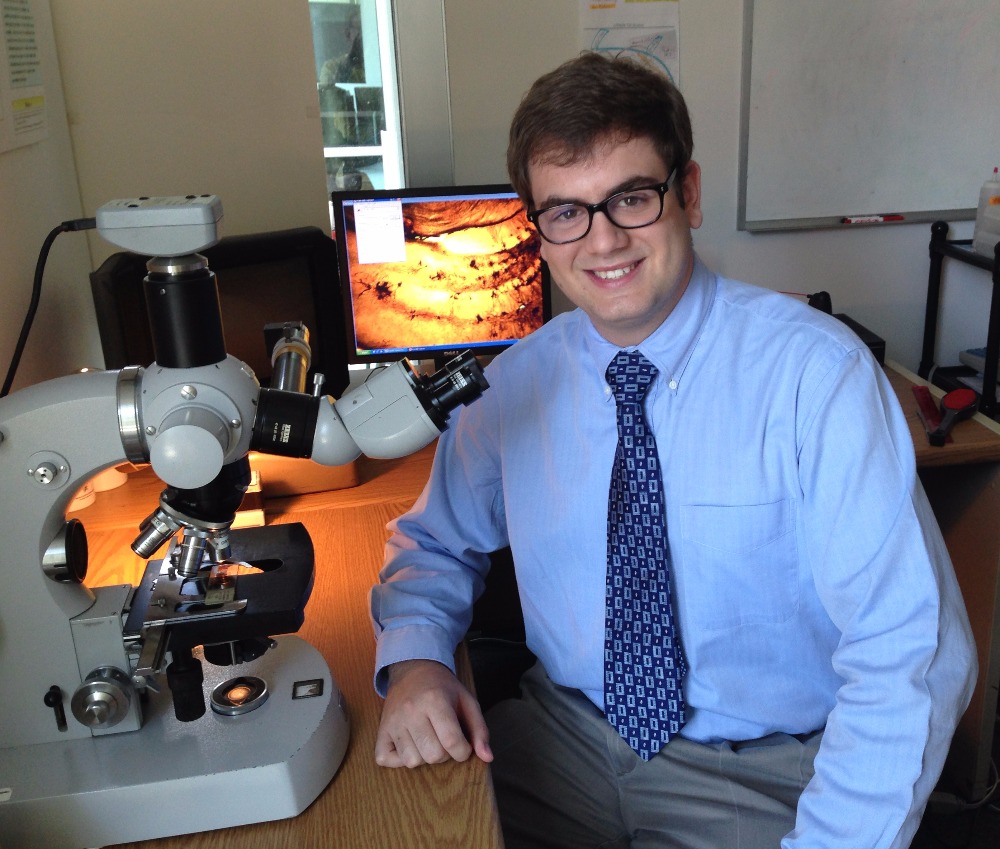

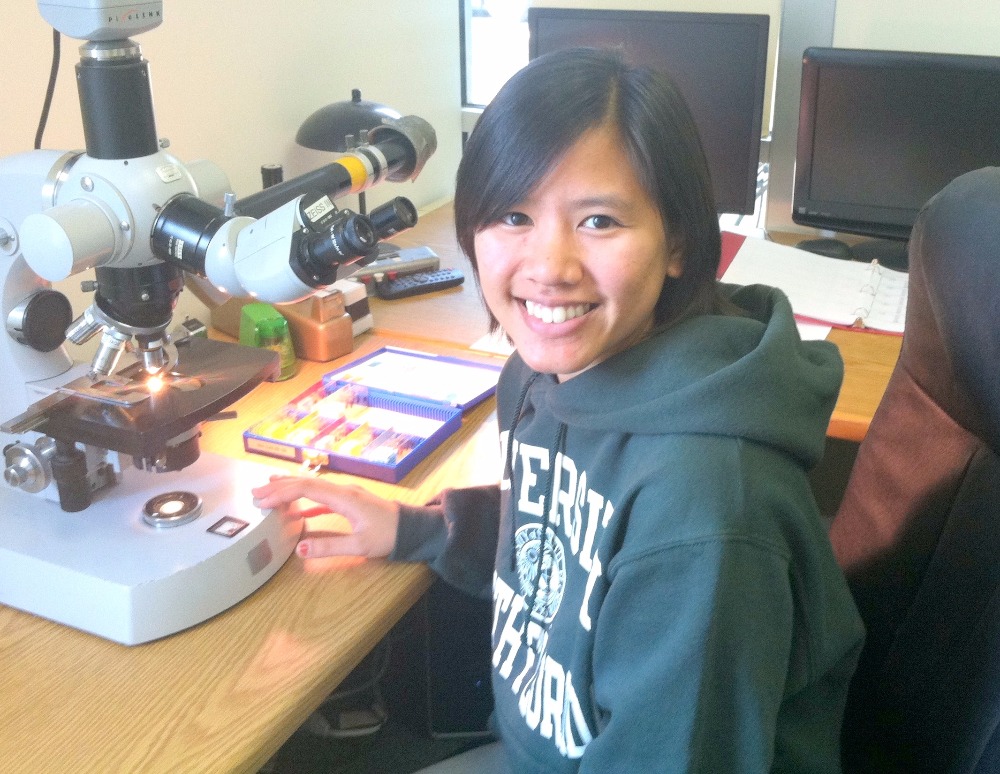
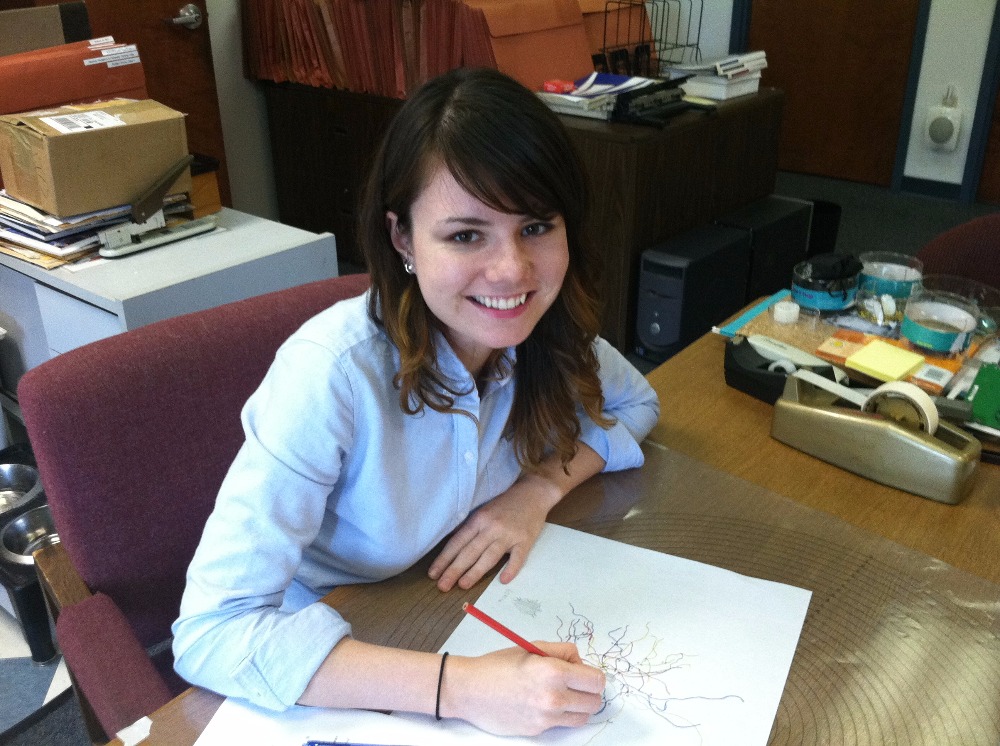
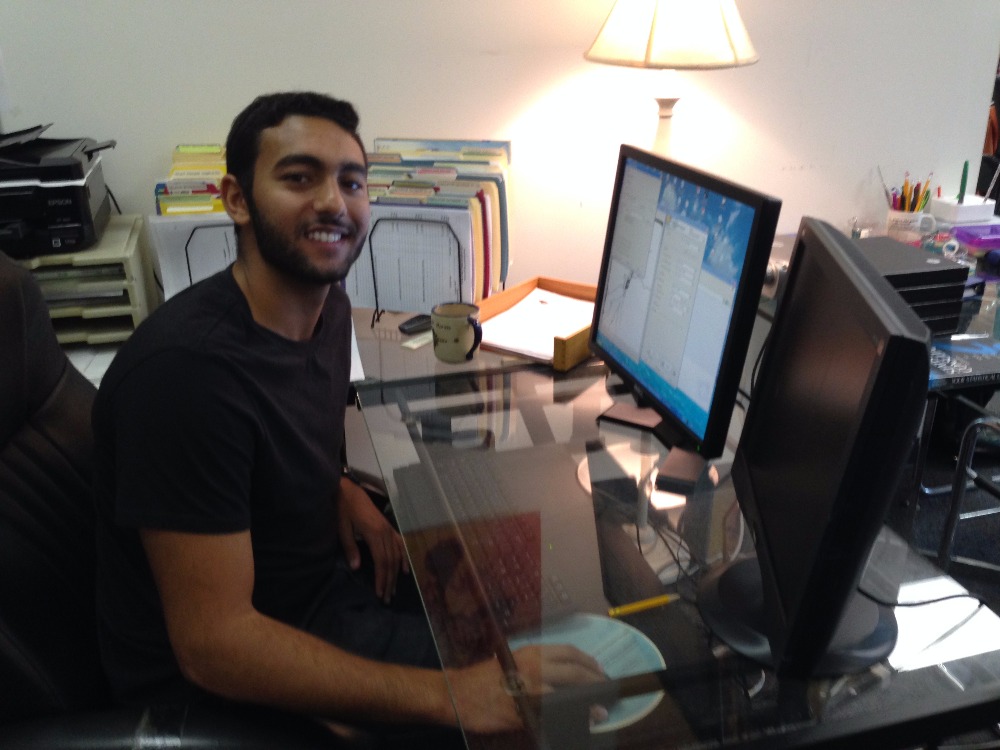
Scientific Presentations:
The photos below are of my students attending meetings of the Society for Neuroscience where their research findings were presented. The annual meeting of the Society for Neuroscience is a major international conference.
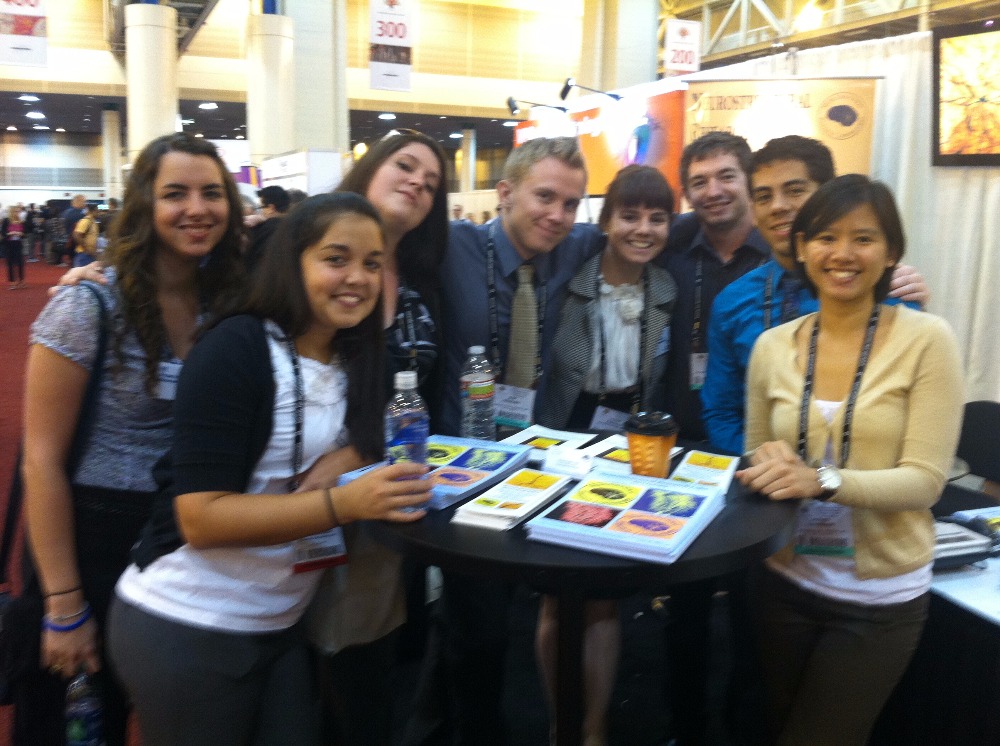
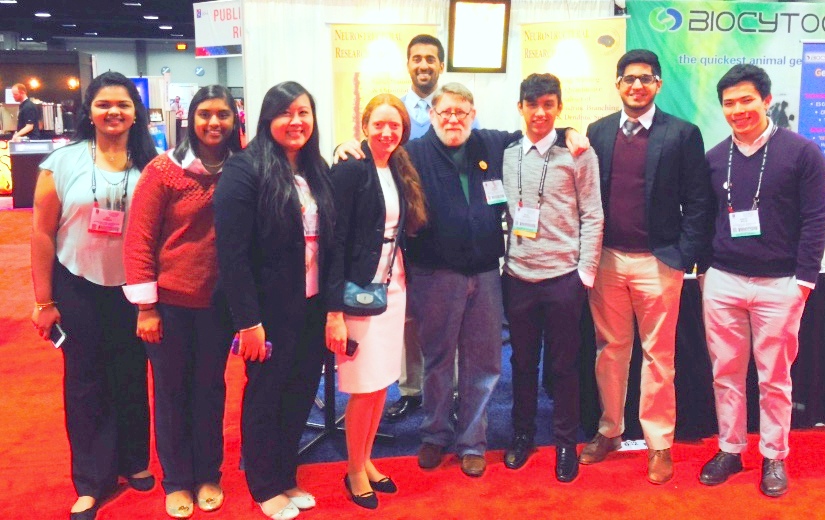
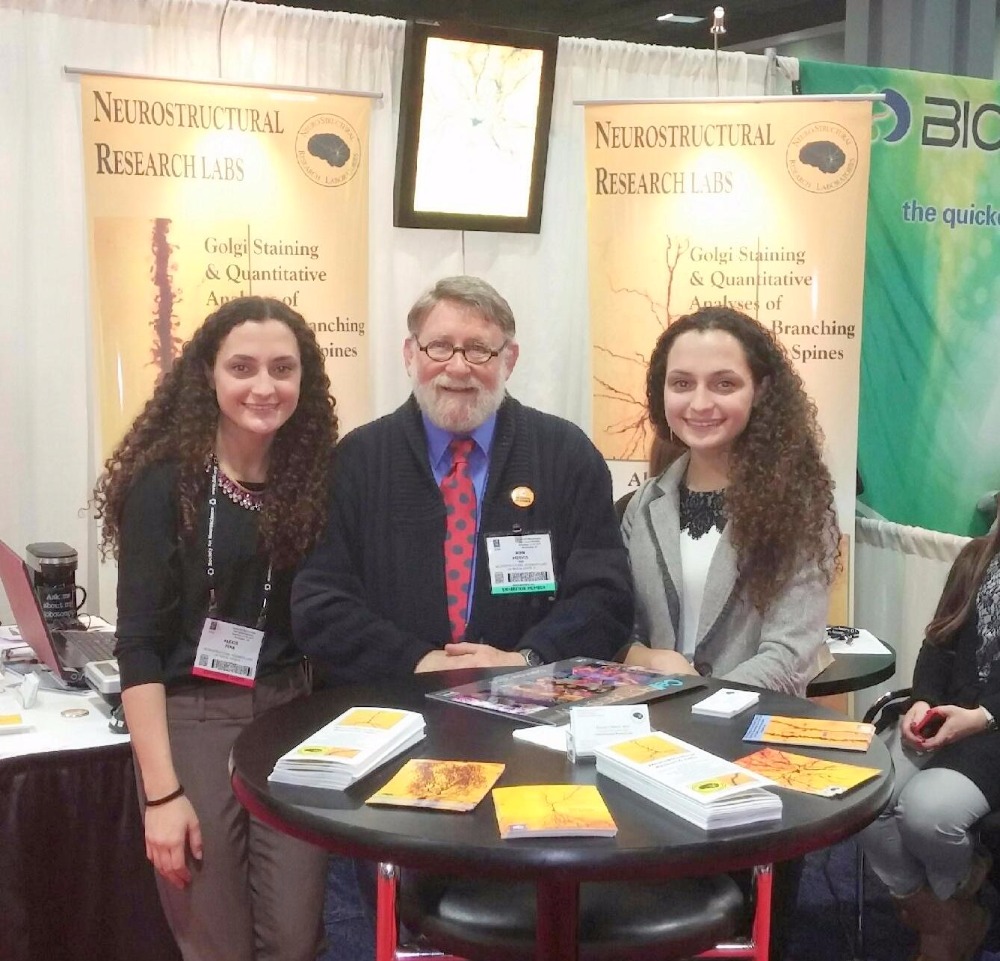 (the twins always seemed to enjoy confusing me....)
(the twins always seemed to enjoy confusing me....)
Below are several photos of my students at their scientific posters where they presented their findings.
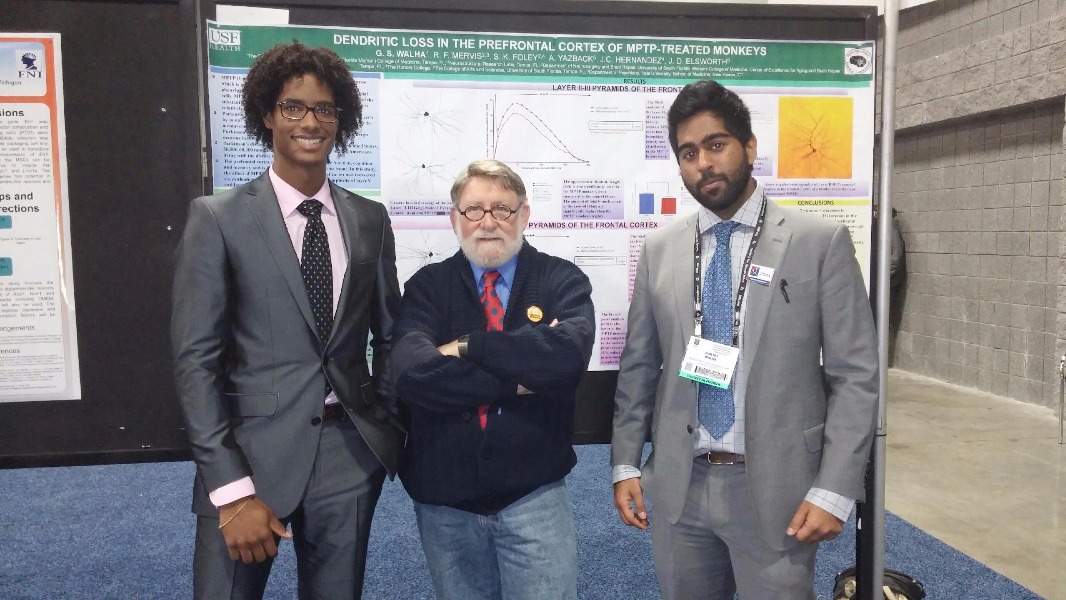 (note: these are both really tall guys... I'm not that short)
(note: these are both really tall guys... I'm not that short)
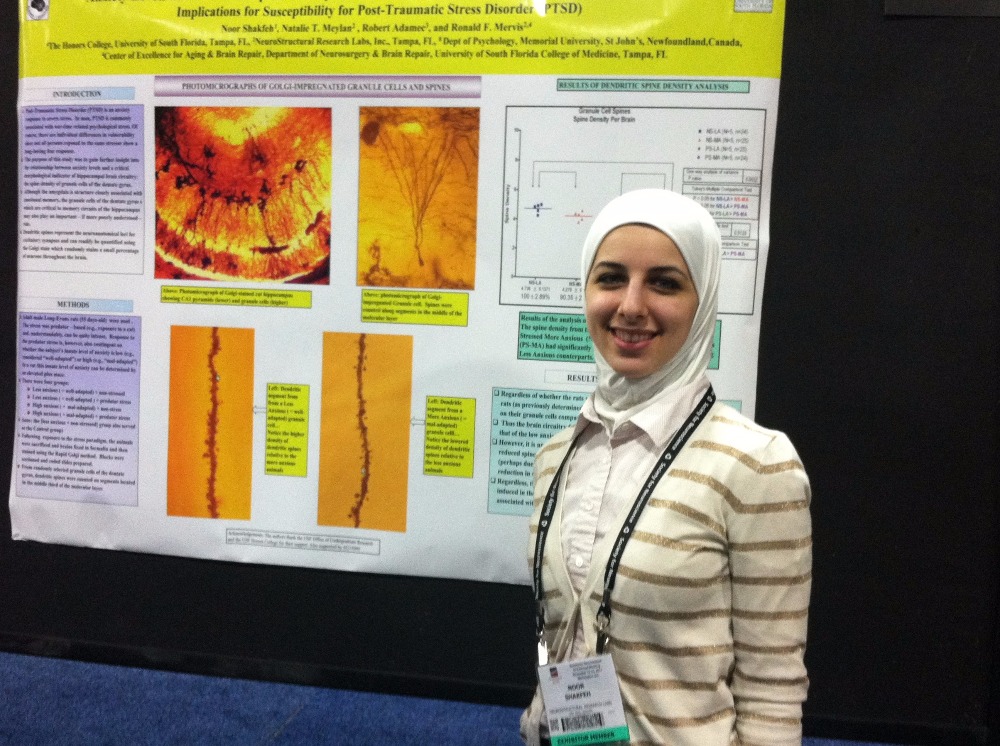
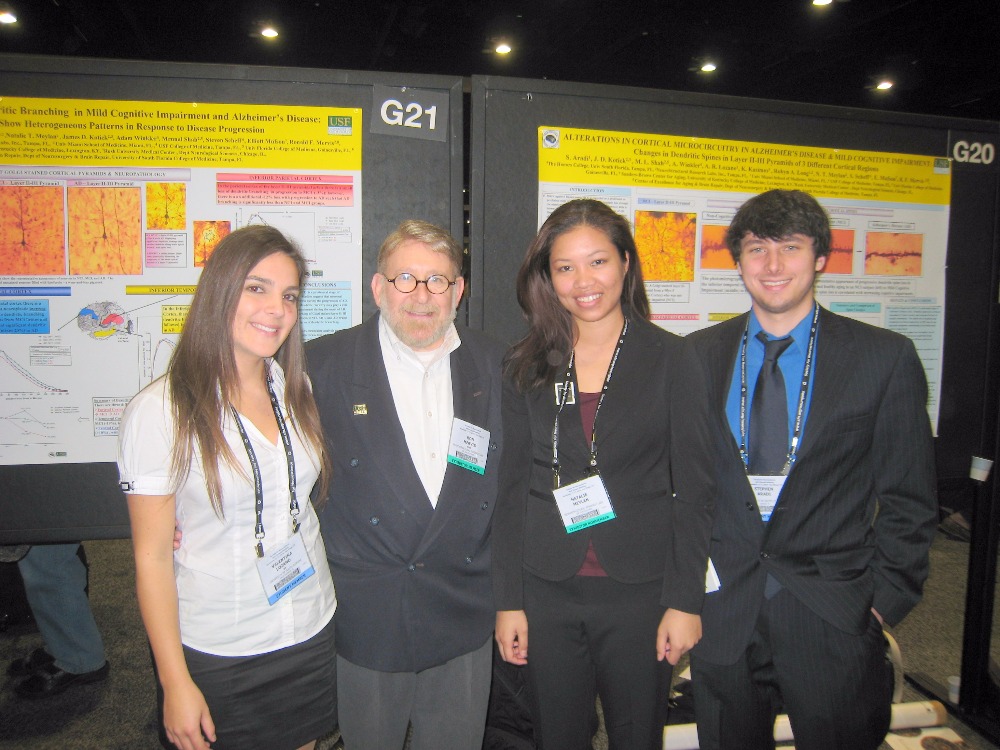
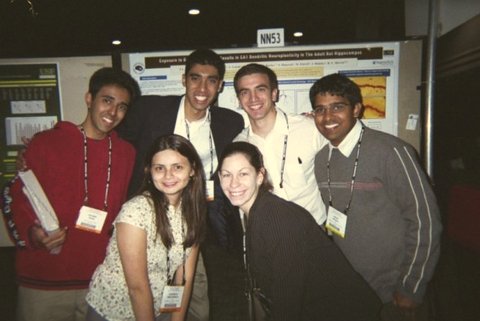
Mentoring the Students....
In addition to the scientific mentoring which I provide to my students, as part of their lab experience I am also proud of my efforts to assist my students in getting into medical school. This includes providing insight and advice regarding the admissions process, reviewing personal statements, giving mock interviews, and writing appropriate letters of recommendation. The culmination of their successful admittance to the USF Morsani College of Medicine is the White Coat ceremony to symbolize their formal committment to medicine as physicians-in-training.
The photos below show some of my students at their USF White Coat ceremonies.
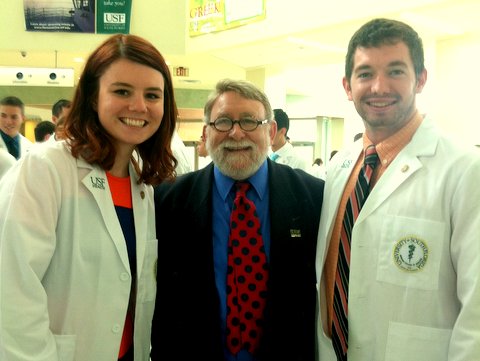
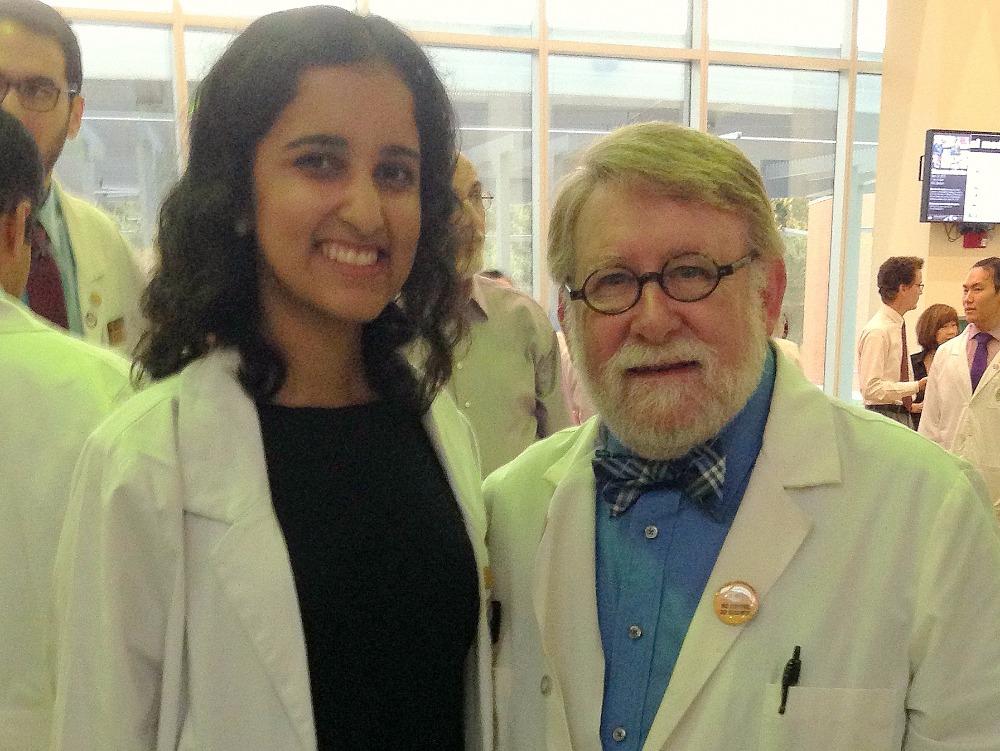
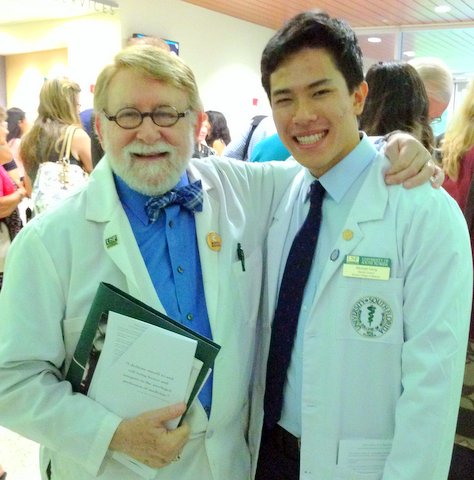
 (This brother-sister duo both did research in my lab and both were accepted into the USF College of Medicine)
(This brother-sister duo both did research in my lab and both were accepted into the USF College of Medicine)
Making A Donation.....
I hope that you will please consider making a tax-deductable charitable contribution to NeuroStructural Research Labs. (We are a 501(c)(3) charitable organization.) We would welcome a modest contribution -- or, if the spirit moves you, an immodest contribution... we'll take that, too.
Any additional funds we can raise will allow us to conduct these and additional research projects as well as assist my students. By providing financial support you will help us conduct especially promising neurological research which can help us gain further knowledge relating to neurological diseases.
How will we use the money?
~~ Purchasing supplies for the lab
~~ Updating microscope and computer equipment, and purchasing software upgrades.
~~ Travel expenses for my students and myself to attend and participate at scientific conferences
~~ Assist in covering lab operating expenses
Upon request, we would be happy to supply donors with a bi-monthly email update of the status of our research projects.
If you would like to learn more about the neurological issues on which we have conducted research, as well as to attain a better understanding of what Golgi-impregnation staining is and how the brain tissue is analyzed please visit the following website link: http://www.neurostructural.org
Thank you for any support you can provide.
Neurostructural Research Labs is a non-profit 501(c)(3) organization which conducts contract neuroscience research with scientists from all over the world involving diseases (such as Alzheimer's) and other factors (such as traumatic brain injury) that can cause brain damage and may affect learning and memory.
I am seeking to raise $32,000 to help support several new and exciting research projects on Alzheimer's disease and brain injury being carried out in my lab. In addition, some of the funds will also be used to help allow my students to attend scientific conferences where they can present the new data that they have generated. (Please scroll down for more detailed information.)
Below is a photo of me and one of my students.

Our research topics have included:
~~ Alzheimer's Disease and Brain Aging
~~ Traumatic brain injury (including the effects of multiple concussions),
~~ Developmental disorders (such as autism and schizophrenia)
~~ Effects of environmental neurotoxins on brain development and maturation
~~ Effects of viruses on brain development
~~ The effect of neuroinflammation on the brain
~~ Dietary influences on brain development and brain aging.
Our research methodology focuses on using a unique staining method, the Golgi stain, to visualize individual neurons. In particular this stain allows us to see the branches of the dendrites on the neurons and the synapses on those branches (the so-called dendritic spines). These dendritic structures are the neuroanatomical basis of complex brain circuitry and the underlying basis of higher cognitive functioning such as learning and memory.
The photomicrograph below is a Golgi-stained cortical neuron from a rat brain. The branches on the neuron are dendrites. Dendrites receive information from other neurons through synapses on their branches.

The photomicrograph below shows the appearance of dendritic spines from our Golgi stained neurons. Each dendritic spine represents a synapse for communication with other neurons.

Loss of dendritic branching and the spines on those branches due to brain damage or neurological disease disrupts normal communication between neurons -- leading to memory and learning disorders.
The photomicrograph below shows the loss of dendritic spines on a neuron in an Alzheimer brain.

Here's another example: the photomicrograph below shows the normal appearance of dendritic spines on a dendritic segment from a neuron in the mouse cortex

The photomicrograph below shows a dendrite from a mouse brain which received two concussions. Notice the dramatic loss of dendritic spines.
 This demonstrates that this type of traumatic brain injury can lead to loss of connections between neurons (synapses) and this loss may be reflected by changes in learning and memory.
This demonstrates that this type of traumatic brain injury can lead to loss of connections between neurons (synapses) and this loss may be reflected by changes in learning and memory.Another example (below) shows the effect of neurotoxins in the environment on brain development and the normal maturation of neurons. In this example, in the photomicrograph below, we show the normal appearance of a neuron in the cerebellum of the rat; this is a Purkinje cell.

In the photomicrograph below we show a Purkinje cell from a rat which had been exposed to an environmental neurotoxin which is a by-product of herbicide production. Notice the abnormal appearance of the Purkinje cell in both shape and size.

The above images are just a very small sampling of the types of research that have we carried out. Our highly quantitative studies of the dendritic branching and spines are an effective means of assessing the health of the neurons and evaluating neural circuitry.
Why I Need Your Help.....
Our scientific expertise in Golgi staining and dendritic branching and spine analysis is unique, As a result, scientists from all over the world contact us with interesting and exciting ideas related to their research and ask us to find structural changes in neurons and brain circuitry that would compliment their results. This involves sending fixed brain tissues to our lab for the staining and subsequent neuronal analyses.
Much of our research is supported by our academic and government contracts, However, on occasion, we become involved in a exciting study of scientific significance where funds are not yet available to cover the cost of the project. In general, these projects would show great potential for gaining unique understanding of the disease and/or treating the disease... as for example, in a new approach for the treatment of Alzheimer's disease. Under these circumstances, we would want to know if the treatment would result in the enhanced brain circuitry (e.g., the formation of additional dendritic branching and/or dendritic spines). However, at the present time, there no research funds available to cover the cost of the study...and it may be many months before any money would become available. Indeed, we are currently involved in several such exciting projects that hold great promise.
The following are examples of collaborative studies that we are currently conducting without outside support:
(1) ~ Using an animal model of Alzheimer's diease, we are working with a group from a German University on a new treatment strategy to treat Alzheimer's disease.
(2) ~ In collaboration with a researcher from a major California medical school we are helping to evaluate a new rat model of Alzheimer's disease.
(3) ~ In collaboration with a team from Tel Aviv University in Israel we are evaluating the effects of blast-related traumatic brain injury on neuronal morphology in a mouse model.
(4) ~ We are working with a group of researchers from Hebrew University, Jerusalem, to evaluate the neuroprotective effect of certain components found in umbilical cord blood on treating traumatic brain injuries.
In addition to using the donations for the research projects , I also have a second major goal: to help my students.
Assisting My Students....
A second major goal of the lab is instilling the love and intellectual challenge associated with neuroscience research in the students. These students are the lifeblood of the lab. I am both fortunate and blessed to have really smart and hardworking undergraduate student interns from the University of South Florida (USF) . These students -- from the USF Honors College -- almost all are in pre-med or other pre-professional programs (PhD, dental, pharmacy).
The opportunity to do neuroscience research is an opportunity for them to learn more about the brain and neurological diseases. It provides an appreciation of the challenges associated with neuroscience research... both the excitement associated with obtaining an important new finding and, occasionally, the disappointment of generating results that were not statistically significant.
In addition, their research in my lab provides a pathway for them to attend scientific conferences and to give presentations at local, national, or international neuroscience meetings. This is an important component -- not only for the scientific recognition that they gain -- but that they can add to their resumes and which will make them more competitive when they apply for admission to their respective medical (or other postgraduate) programs.
The photo below shows the students in my lab from this year.
 One of the most positive aspects of working with my USF students is an appreciation of their diverse ethnic backgrounds . This year, my students come from families whose parents are immigrants from Vietnam, Mexico, India, Pakistan, Cuba, Colombia, Bangladesh, El Salvador, Senegal, Lebanon, Egypt, and Argentina. (We even have a native Floridian, as well as students from upstate New York and Delaware).
One of the most positive aspects of working with my USF students is an appreciation of their diverse ethnic backgrounds . This year, my students come from families whose parents are immigrants from Vietnam, Mexico, India, Pakistan, Cuba, Colombia, Bangladesh, El Salvador, Senegal, Lebanon, Egypt, and Argentina. (We even have a native Floridian, as well as students from upstate New York and Delaware).Below are photos of some of my students involved in their research projects:







Scientific Presentations:
The photos below are of my students attending meetings of the Society for Neuroscience where their research findings were presented. The annual meeting of the Society for Neuroscience is a major international conference.


 (the twins always seemed to enjoy confusing me....)
(the twins always seemed to enjoy confusing me....)Below are several photos of my students at their scientific posters where they presented their findings.
 (note: these are both really tall guys... I'm not that short)
(note: these are both really tall guys... I'm not that short)


Mentoring the Students....
In addition to the scientific mentoring which I provide to my students, as part of their lab experience I am also proud of my efforts to assist my students in getting into medical school. This includes providing insight and advice regarding the admissions process, reviewing personal statements, giving mock interviews, and writing appropriate letters of recommendation. The culmination of their successful admittance to the USF Morsani College of Medicine is the White Coat ceremony to symbolize their formal committment to medicine as physicians-in-training.
The photos below show some of my students at their USF White Coat ceremonies.



 (This brother-sister duo both did research in my lab and both were accepted into the USF College of Medicine)
(This brother-sister duo both did research in my lab and both were accepted into the USF College of Medicine)Making A Donation.....
I hope that you will please consider making a tax-deductable charitable contribution to NeuroStructural Research Labs. (We are a 501(c)(3) charitable organization.) We would welcome a modest contribution -- or, if the spirit moves you, an immodest contribution... we'll take that, too.
Any additional funds we can raise will allow us to conduct these and additional research projects as well as assist my students. By providing financial support you will help us conduct especially promising neurological research which can help us gain further knowledge relating to neurological diseases.
How will we use the money?
~~ Purchasing supplies for the lab
~~ Updating microscope and computer equipment, and purchasing software upgrades.
~~ Travel expenses for my students and myself to attend and participate at scientific conferences
~~ Assist in covering lab operating expenses
Upon request, we would be happy to supply donors with a bi-monthly email update of the status of our research projects.
If you would like to learn more about the neurological issues on which we have conducted research, as well as to attain a better understanding of what Golgi-impregnation staining is and how the brain tissue is analyzed please visit the following website link: http://www.neurostructural.org
Thank you for any support you can provide.
Organizer
Golgi Sci
Organizer
Tampa, FL
Inspired to help? Start a fundraiser for someone you know


